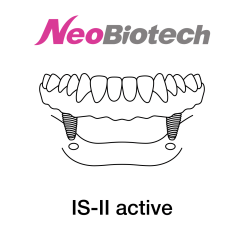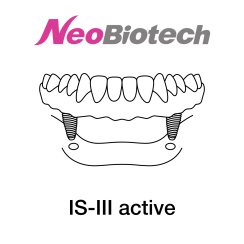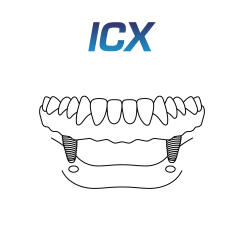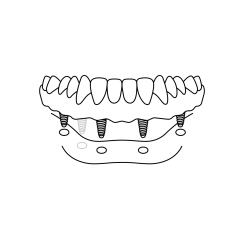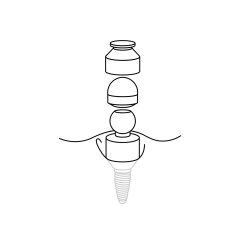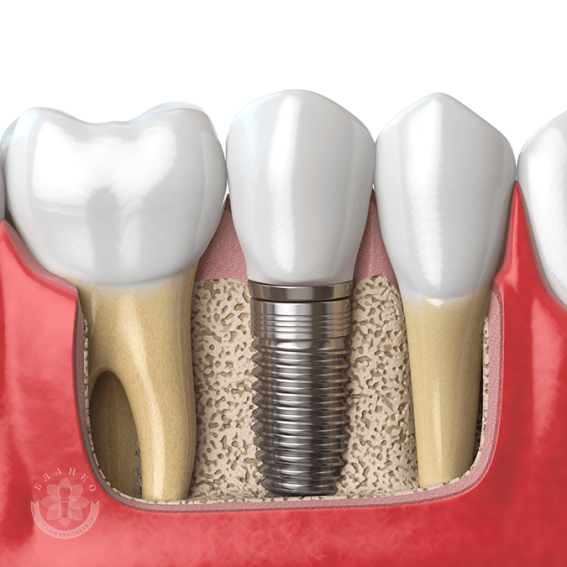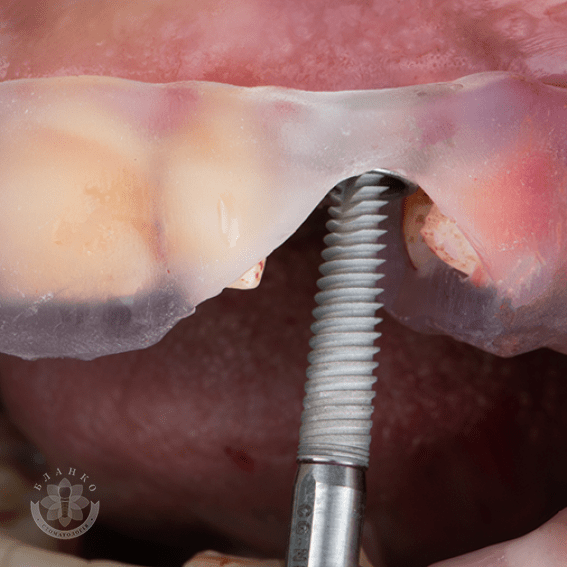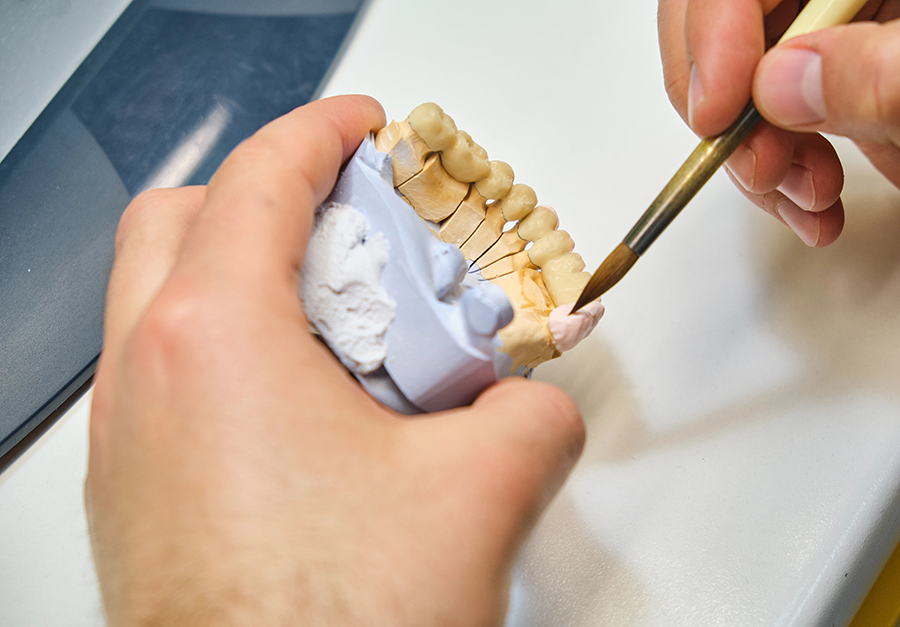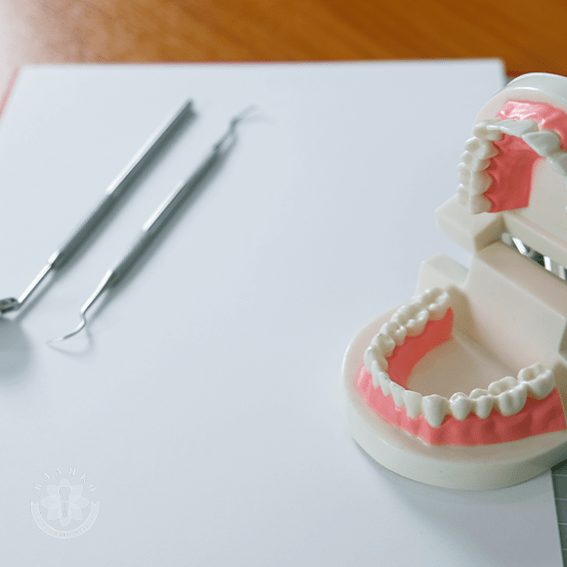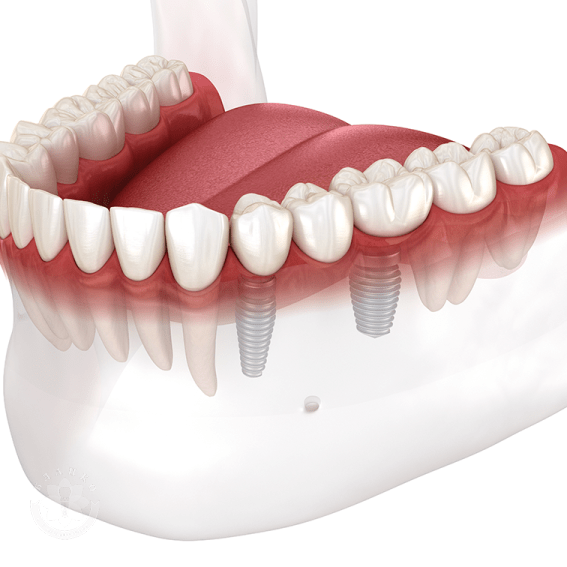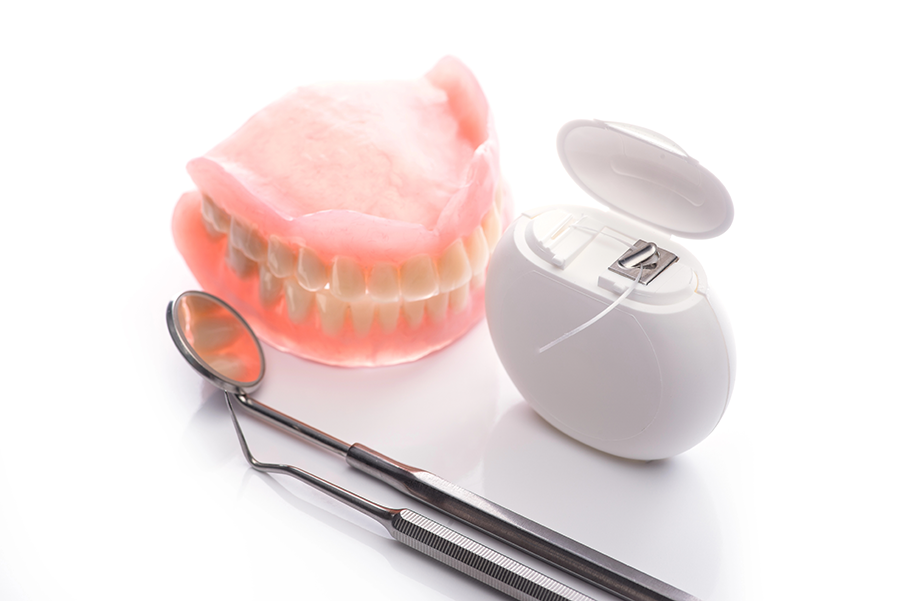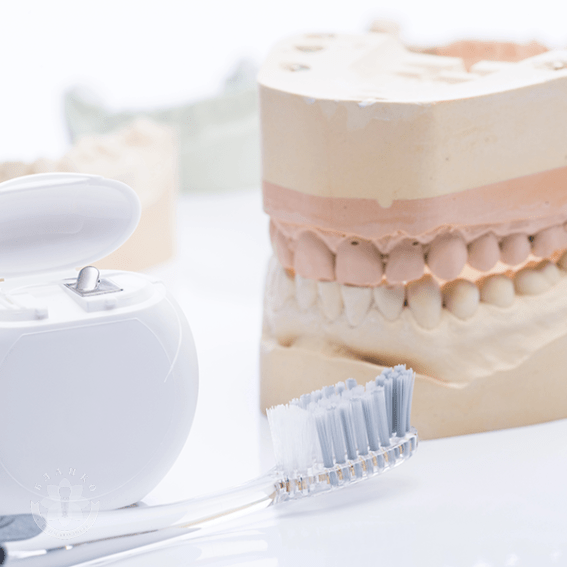
The cost of implantation of two implants depends on a number of factors that affect the complexity and volume of the procedures performed, as well as the materials and technologies used. Here are the main parameters that determine the final price.
- Type and brand of implants
- Bone tissue condition
- Experience and qualifications of the doctor

| Service name | Price |
|---|---|
| Установка двух имплантов «под ключ» Bauers ( Украина ) + протез | 42209 ₴ |
| Установка двух имплантов «под ключ» NeoBioTech IS II Active ( Южная Корея ) + протез | 47649 ₴ |
| Установка двух имплантов «под ключ» NeoBioTech IS III Active ( Южная Корея ) + протез | 51279 ₴ |
| Установка двух имплантов «под ключ» ICX ( Германия ) + протез | 63449 ₴ |
| Установка двух имплантов «под ключ» Straumann ( Швейцария ) + протез | 110729 ₴ |
| Установка дополнительного импланта в концепции «ball-attachment» | 16969 ₴ |
| Смена матриц в протезе выполненном в концепции «ball-attachment» | 5139 ₴ |



-
stageInitial consultation and diagnostics
-
stagePreparing for implant installation
-
stageInstallation of implants
-
stageOsseointegration period (engraftment)
-
stageInstallation of gum formers
-
stageTaking impressions and making crowns
-
stageInstallation of permanent crowns
-
stagePostoperative rehabilitation and control
Preparing for the implantation of two dental implants is an important stage, on which the success of the procedure and the healing process largely depend. Here are some key steps that will help you prepare for the operation and minimize possible risks.
Consultation with an implantologist
The first and most important step is to contact a qualified specialist. During the consultation, the doctor will assess the condition of the oral cavity, bone tissue and general health of the patient. This may require diagnostic procedures such as X-rays, CT or 3D scanning. The doctor will also collect an anamnesis to exclude possible contraindications, such as the presence of chronic diseases that can affect the healing process.
Treatment and sanitation of the oral cavity
Before implantation, it is important to make sure that there is no inflammation, infection or carious lesions in the oral cavity. If there are any problems, such as caries, periodontitis or residual teeth, they must be eliminated before the procedure. This will help reduce the risk of complications and increase the chances of successful engraftment of the implants.
General health recommendations
It is necessary to pay attention to your general health in advance of the procedure:
- Quit smoking: Smoking can significantly slow down the healing process and affect the success of implantation, as nicotine worsens blood circulation in the gum tissue.
- Balanced nutrition: Proper nutrition before surgery will help strengthen the immune system and speed up the regeneration process after implant placement. It is important to include foods rich in vitamins C and D, as well as calcium, in your diet.
- Taking medications: If the patient is taking any medications (for example, blood thinners),this must be reported to the doctor. In some cases, it may be necessary to adjust the treatment regimen a few days before the procedure.


When a tooth is missing, the bone tissue in that area is no longer supported by its natural load and gradually begins to dissolve. The longer the implant placement is delayed, the more bone volume is lost, which may require additional procedures, such as bone grafting, before implantation.

When a tooth is missing, adjacent teeth begin to shift toward the empty space. This can lead to malocclusion, difficulty chewing, and changes in the aesthetics of the smile. Correcting such problems may require additional orthodontic interventions.

Missing teeth reduce the efficiency of chewing, which can lead to digestive problems and discomfort when eating. It can also affect pronunciation, especially if a front tooth is missing, which can make everyday communication difficult.
The turnkey procedure for installing two implants is a comprehensive solution for restoring lost teeth, including all the necessary stages to achieve the final result.
- Diagnostics and planning. First, a full examination of the oral cavity is carried out, including X-rays or CT scans to assess the condition of the bone and develop an individual treatment plan.
- Preparation. If necessary, preparation is carried out: bone augmentation or gum treatment. This is important to create optimal conditions for the successful installation of implants.
- Installation of implants. The doctor performs surgical installation of implants into the jawbone under local anesthesia. This is a quick and precise process that usually takes from 1 to 2 hours.
- Postoperative care. After the installation of implants, the patient is assigned a recovery period, including recommendations for care and taking the necessary medications to prevent complications.
- Installation of temporary crowns. If necessary, temporary crowns are installed to restore function and aesthetics until the final installation of permanent crowns.
- Permanent crowns. After the osseointegration period, when the implants are firmly ingrained in the bone (usually 3 to 4 months),permanent crowns are installed that perfectly match the color and shape of natural teeth.
- Monitoring and maintenance. At the end of the procedure, a control examination is carried out and recommendations are provided on how to care for the implants to ensure durability and health.
The turnkey procedure allows the patient to receive all the necessary services within one package, ensuring comfort and confidence in the treatment result.
The placement of two implants usually takes a relatively short time, but the overall treatment time can vary depending on a number of factors.
- The placement procedure. The actual surgical placement of two implants usually takes between 1 and 2 hours. This involves the precise placement of the implants into the jawbone under local anesthesia.
- The osseointegration period. After the implants are placed, time is needed for the implants to fuse with the bone tissue. This process is called osseointegration and usually takes between 3 and 4 months. During this time, the bone around the implants strengthens, ensuring their reliable fixation.
- Placement of crowns. Once osseointegration is complete and successful healing of the implants is confirmed, the permanent crowns are placed. This stage usually takes 1 to 2 weeks, as it requires preliminary fabrication of the crowns and their precise fitting.
While the placement of the implants itself only takes a few hours, the full recovery process with the placement of the permanent crowns can take between 3 and 6 months. It is important to follow the dentist’s recommendations and attend regular check-ups to ensure a successful outcome.
Installing two implants has several significant advantages over alternative methods of restoring lost teeth.
- Durability and reliability. Implants are made of highly durable materials such as titanium or zirconium, which ensures their longevity. With proper care and regular check-ups, implants can last for decades, making them a more durable solution than temporary dentures.
- Preservation of dental health. Unlike bridges, installing implants does not require grinding down adjacent healthy teeth. This helps to preserve their integrity and functionality, preventing potential problems in the future.
- Natural appearance and function. Implants and crowns installed on them look and function like natural teeth. They help restore full chewing function and natural aesthetics of the smile, which is difficult to achieve with removable dentures.
- Improved comfort and confidence. Implants are securely fixed in the jawbone, which eliminates the discomfort and sliding that can occur with removable dentures. This helps to increase confidence when speaking and eating.
- Maintaining the jaw structure. Implants help to preserve the jaw bone tissue, which can atrophy due to the long-term absence of teeth. This prevents changes in the shape of the face and maintains the natural anatomy of the jaw.
In this way, the installation of two implants offers long-term advantages over other methods of dental restoration, providing reliability, comfort and maintaining the health of the teeth and jaw.
The installation of two implants, despite their high efficiency and durability, is associated with some risks that are important to consider:
- Infection. After the installation of implants, there is a risk of developing infections in the surgical area. This can lead to inflammation or rejection of the implant. Proper oral hygiene and following the doctor's recommendations help to minimize this risk.
- Implant rejection. In rare cases, implants may not properly integrate with the bone, which leads to their rejection. This can be caused by individual characteristics of the body or insufficient bone quality.
- Injuries to surrounding tissues. During the procedure, damage to the gums, nerves, or blood vessels is possible. This can cause temporary discomfort or swelling, but usually such problems can be successfully resolved with medical care.
- Incorrect installation. If the implants are installed incorrectly, this can lead to problems with engraftment and functionality. Therefore, it is extremely important to choose an experienced dentist to perform the procedure.
- Problems with osseointegration. The process of implant integration with the bone can be slowed down or disrupted for various reasons, including the patient's medical conditions or insufficient bone quality.
Despite possible risks, proper diagnostics, a qualified approach to installation and careful adherence to the doctor's recommendations significantly reduce the likelihood of complications and contribute to a successful treatment outcome.



